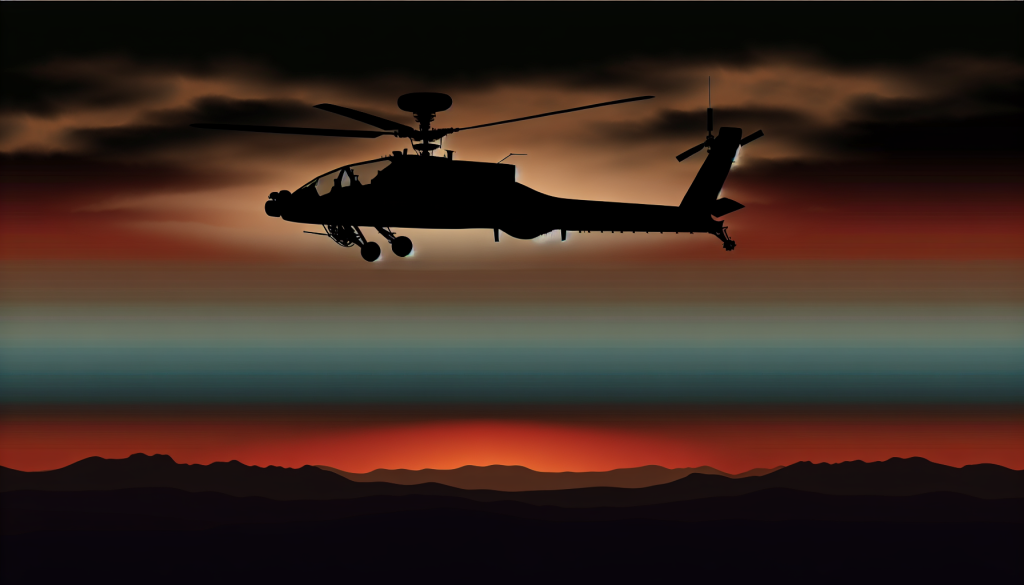The Future of Attack Helicopters: Are They Really on the Verge of Extinction?
For over three decades, the Apache, Ka-52, and other renowned attack helicopters have faced mounting losses on the modern battlefield. Analysts increasingly argue that these iconic machines should be replaced by drones, relegating helicopters to museums. But does this narrative paint an accurate picture of what lies ahead for attack aviation?
The Shift in the Role of Attack Helicopters
Once upon a time in the late 1960s, the modern attack helicopter was conjured to counter large armored offensives. The looming threat of a Soviet tank blitz across Western Europe necessitated a versatile aerial platform. Attack helicopters inherited attributes from tanks—mobility, armor, and powerful ammunition—making them formidable on the battlefield. They were vital players in conflicts spanning from the Six-Day War to the Gulf War, where armored invasions reigned supreme.
In recent decades, however, the nature of warfare has transformed dramatically. State-on-state armored invasions have become a rarity, with notable instances being the First Chechen War, the 2003 Iraq invasion, and the ongoing conflict in Ukraine. Instead of engaging in close air support through direct attacks, militaries have often preferred to allow tanks and armored vehicles to advance, only to destroy them with anti-tank missiles. This shift has rendered established roles of attack helicopters less critical.
The Rise of Drones
As the battlefield has evolved, so too have operational paradigms. Attack helicopters now primarily function in close air support roles, providing real-time aerial support to ground troops. Yet, modern drones excel in these tasks. They are cost-effective, maintain accuracy, and can stay aloft for extended periods—often four times longer than their helicopter counterparts. With their superior endurance and lower operational costs, drones have become a more appealing option for military strategists.
While helicopters have long been viewed as indispensable for air support and logistical operations, drones are now outperforming them in many ways. The recent conflicts in Ukraine have illustrated this; the high casualty rates among attack helicopters have raised questions about their continued viability against modern air defenses.
The Deterioration of Low-Altitude Operations
Historically, helicopters could thrive at low altitudes, utilizing terrain to their advantage. Yet, contemporary battlefields are fraught with multi-layered air defenses equipped with advanced detection systems. During the Gulf War, the U.S.-led coalition suffered minimal helicopter losses due to the decimation of Iraq’s air defenses. Fast forward to the 2003 invasion of Iraq, where losses climbed to 10%, and a staggering 20% in Russia’s 2008 invasion of Georgia. The ongoing conflict in Ukraine has only intensified these trends, with Russia reportedly losing nearly 30% of its deployed helicopter fleet.
The proliferation of advanced surface-to-air missile systems like the S-300 and the Pantsir has turned previously safe territories into lethal zones for aerial operations. Data indicates that around 80% of modern helicopter losses can be attributed to these long-range systems, drastically altering the calculus of air operations.
Cost, Training, and Operational Advantages
A key advantage that drones possess over attack helicopters is their cost. The advanced Apache AH-64E, for instance, comes with an acquisition price of about $52 million, alongside significant operational costs. In contrast, the MQ-9 Reaper drone costs around $30 million and has much lower hourly operating expenses. The Turkish Bayraktar TB2, making waves in Ukraine, is even more economical, with a total cost of about $5 million.
Training requirements further highlight the disparity. U.S. Apache pilots undergo extensive training lasting up to 24 months, whereas a Reaper team can be operational after significantly less time—often under a year for the pilot and sensor operator. This complexity adds to the overall costs, making helicopters less appealing as budgetary constraints become increasingly pressing.
Despite drones’ many advantages, helicopters retain capabilities that unmanned systems cannot match. Their agility, hovering capability, and ability to operate in tight environments make them uniquely suited for specific operational scenarios, such as special operations and urban warfare.
Human Factor in Combat
Notably, the human element remains a critical advantage for helicopters. From situational awareness to real-time decision-making in chaotic combat environments, trained pilots can adapt to rapidly changing circumstances in ways that drones currently cannot. The Apache’s 30 mm cannon, for example, offers precision firepower that is difficult to replicate in unmanned systems.
During recent conflicts like Hamas’ assault on Israel, helicopters showcased their ability to engage effectively based on intelligence from ground troops, proving their value in dynamic combat situations.
The Bottom Line: Coexistence in Future Warfare
While some military analysts project the imminent retirement of attack helicopters, it’s essential to recognize that both helicopters and drones have distinct roles in modern warfare. Drones may excel in many areas, but helicopters still deliver critical capabilities that unmanned systems cannot replicate, especially in complex and chaotic environments.
Surprisingly, despite the shifting tide towards unmanned aerial systems, militaries, including Israel, continue to invest in and maintain their attack helicopter fleets. The IDF recently opted to acquire more Apaches rather than phase them out, suggesting that for the foreseeable future, helicopters will remain integral in operational theaters worldwide.
As technological advancements continue to shape military strategies, the dialogue surrounding the future of attack helicopters will evolve, but for now, they allot significant tactical advantages and unparalleled human oversight that throughout history, have made them indispensable.

